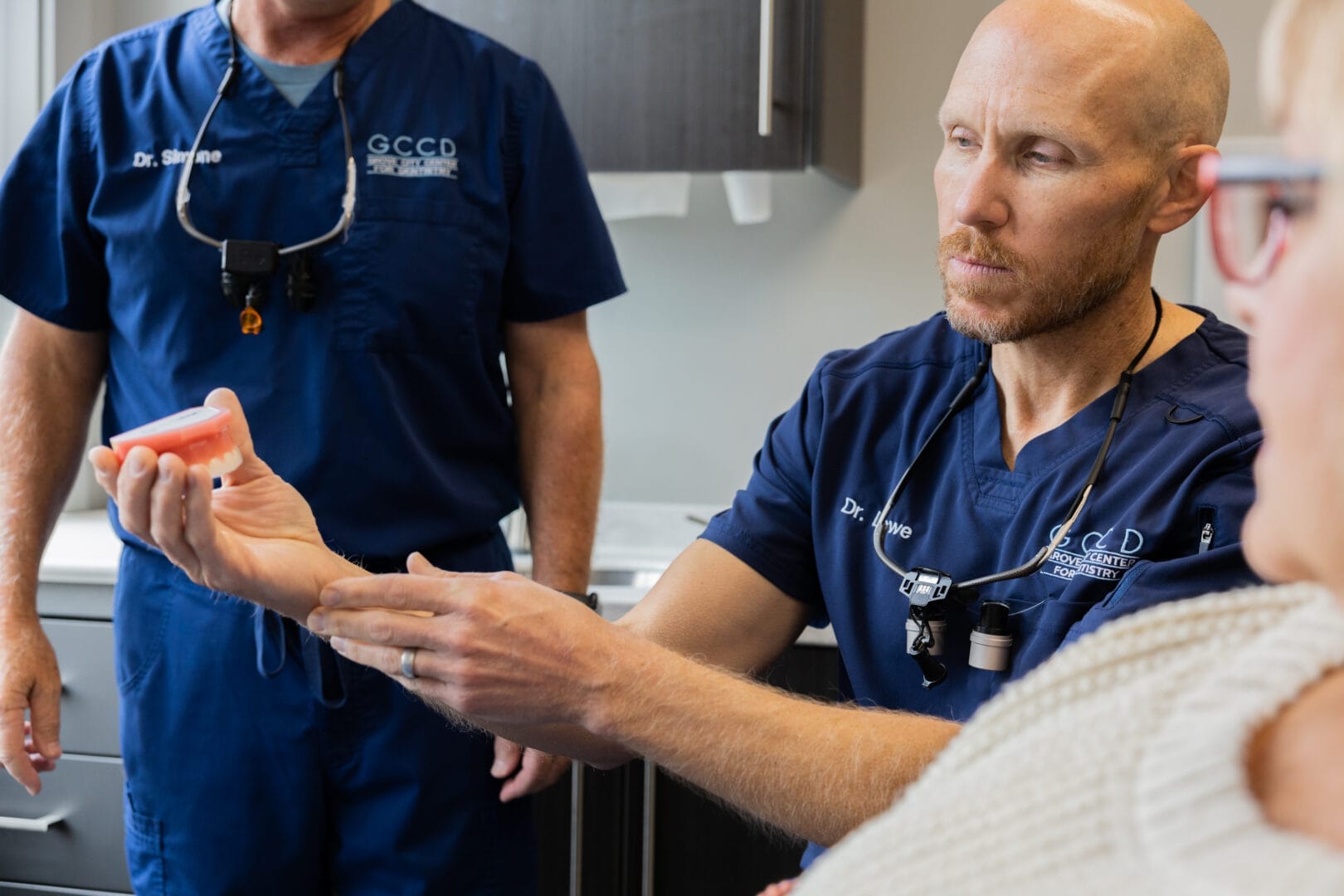Gum grafting helps repair damage caused by gum recession—a condition where gum tissue pulls away from the teeth, exposing the roots. This procedure covers exposed roots, prevents further damage, and strengthens oral health. But gum recession is often ignored until it becomes painful or visibly severe. Many people delay treatment and end up asking whether they’ve waited too long.
So, when is it too late for gum grafting?
The short answer is this: gum grafting depends on the health of your teeth, gums, and underlying bone. If a recession is caught and treated early, the outcome is often successful. But in more serious cases, especially those involving bone loss or loose teeth, gum grafting may not be effective. In these situations, your dentist will recommend other options to prevent further oral health issues.
What is Gum Grafting and Why is it Necessary?
Gum grafting is a type of periodontal surgery. It involves placing new tissue—either from your own mouth or from a donor source—over areas affected by gum recession. The new tissue helps protect exposed roots, supports remaining gum structure, and limits further recession.
When the root surface of a tooth is uncovered due to recession, it becomes more sensitive to temperature changes and more vulnerable to decay. A graft helps reduce these risks.
Gum recession is more than a cosmetic problem.
Left untreated, it leaves the teeth exposed to wear and infection. The longer the roots are exposed, the more likely it is that complications like bone loss or tooth loss will follow.
Gum grafting protects against these risks. It restores a barrier against bacteria, supports overall gum health, and improves comfort during eating and brushing.
Factors That Cause Gum Recession
Gums often recede slowly and without pain, which makes it easy to ignore. Several factors contribute to gum recession:
- Poor oral hygiene
- Periodontal disease
- Aggressive tooth brushing
- Teeth grinding or clenching
- Smoking or tobacco use
- Genetics
If gum recession isn’t treated early, it can cause damage to the supporting bone and lead to tooth loss.
When Gum Grafting Works Best
Gum grafting is most effective in the early to moderate stages of gum recession. At this point, gum disease may be present, but the tooth structure has not yet sustained heavy damage. The roots may be visible, but the surrounding bone is still intact. The teeth remain firmly in place, and the nearby gum tissue is stable enough to support graft healing.
In this scenario, gum grafting can halt the progression of gum recession and maintain a functional, healthy smile. The procedure closes gaps that bacteria might otherwise enter and creates a stable environment for the teeth.
Most importantly, a graft done at the right time protects you from further deterioration of your oral health.
When Might It Be Too Late for Gum Grafting?
There are limits to what gum grafting can correct. This procedure works only when certain conditions are met. If the recession has become too advanced, or if the tooth has already lost significant bone support, grafting may no longer be a viable solution.
Here are common signs and conditions that may indicate it’s too late for a gum graft:
- Significant bone loss around the tooth
- Loose or mobile teeth due to lack of structural support
- Persistent, untreated periodontal disease
- Gum infection that interferes with healing
- Extremely deep gum pockets around affected teeth
In such cases, gum grafting alone won’t stop the damage. When gum tissue and jawbone are both compromised, dentists may need to look at other treatment plans. That might include dental surgery, tooth extraction, or bone grafting in preparation for implants.
How to Know If You’ve Waited Too Long
Certain signs suggest that gum recession has reached an advanced stage. These include teeth that wiggle or shift in the mouth, frequent bleeding during brushing or flossing, persistent gum inflammation, and a noticeable increase in how much of each tooth is visible when you smile.
Sensitivity that does not improve with regular care may also indicate that gum tissue has receded too far.
Your dentist will use several methods to evaluate whether gum grafting is still appropriate. These include measuring the depth of the gum pockets, checking for tooth stability, and reviewing dental X-rays to assess the state of the surrounding bone. If the bone and tissue loss is too extensive, your provider will explore alternative procedures.
Options When Gum Grafting Isn’t Viable
If your recession is too advanced or you’re not a good candidate for a gum graft, your dentist will discuss other steps to manage your oral health. These aim to slow the progression of periodontal disease and avoid tooth loss.
In situations where gum grafting is not suitable, your dentist may recommend:
- Scaling and root planing to remove plaque and tartar below the gumline
- Antibiotic therapy to control infection
- Bone grafting to rebuild lost jawbone
- Extraction of unstable teeth, followed by placement of dental implants
- Ongoing periodontal therapy/care to manage gum health
While these treatments won’t restore lost gum tissue the way a graft can, they can help stabilize the mouth and prevent more damage.
Knowing the Right Time Can Save Your Smile
Gum grafting is an effective solution for restoring gum tissue and protecting the roots of your teeth—but timing matters. When gum recession is caught early, a graft can reduce sensitivity, improve gum health, and stop further damage before it reaches the bone.
But if gum disease has advanced, and if bone loss or tooth mobility is already present, a graft may no longer offer real benefits. In these cases, dentists focus on controlling the damage, protecting nearby teeth, and planning for alternative treatments to maintain oral health.
That said, thinking it’s too late without seeing a dental professional can limit your options. Some patients assume nothing can be done when, in fact, parts of the gum and bone structure may still respond to care.
If you’re seeing signs of gum recession or experiencing symptoms like exposed roots or bleeding gums, talk to your dentist in Grove City as soon as possible. Even if gum grafting is not the ideal choice, there are still paths to protect your oral health.
Acting early gives you a better chance to keep your natural teeth and avoid more invasive procedures later. When it comes to gum health, being proactive is the most effective treatment you can choose.









